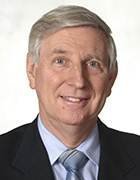
Sergey Nivens - Fotolia
Tools and tips to track server power consumption
Server power requirements differ for each organization, but it's still essential to monitor peak loads and track how much power your servers consume to avoid outages.
Server power consumption is a necessary component to monitor as part of comprehensive data center operations. Servers are some of the biggest power users in a data center, but actual electrical consumption depends on several factors: server design, processor architecture and business use cases.
According to IT experts, server power measurement and management requires a mix of tools and methods, instead of looking at one metric.
Use cases such as big data analysis have significantly influenced the definition of a typical server, and server power consumption per rack unit generally continued to rise over the past five years.
"We routinely see peak power draws of 20-30 kW per 45U cabinet," said Peter Harrison, chief technical officer and co-founder of Colovore, a colocation services provider.
It is critical to analyze these peaks to prevent potential operational issues. Circuit breakers can trip due to sudden phase imbalances that didn't exist before an artificial intelligence job was sent to a rack, Harrison said.
Temperature rises related to these loads can easily become facility-wide and sustained as the spikes become more evenly distributed across the floor. When organizations run big data analysis jobs, server fan exhaust temperatures can peak at 122 degrees Fahrenheit (50 degrees Celsius) or higher.
"All IT equipment in a rack will need to operate comfortably under these conditions, especially the power distribution systems, due to fire and life safety considerations," he said.
It is prudent to understand your baseline power requirements and power requirements under various loads, said Joseph Ferdinando, founder of HotHeadTech.com, an IT support company.
"Knowing this information will tell you what power [equipment] needs to be installed, as well as how many power distribution units will be needed [in your data center]," he said.
This information also helps IT teams plan for future infrastructure and long-term goals.
"If you plan to scale over the next 12 months, you should consider basing your power requirements on your anticipated growth as opposed to what you need today," Ferdinando said.
Bring in the benchmarks
For admins with experience in measuring server power consumption, one easy metric to track is idle power.
"Everybody has a good definition of idle power, because you just let the system settle down so it isn't loading things in the background and then you measure it; we all know what that means and we all know what the number is," said Tony Harvey, a Gartner senior research director.
However, he noted, as soon as admins introduce active measurement and dynamic loads, tracking server power consumption is trickier; operating at full power is different for each organization.
Harvey said peak server power consumption is usually defined and measured by maximizing the number of transistors going on and off. However, which power metrics are useful depends on the organization's needs and IT requirements.
Useful power consumption data is different for an organization emphasizing high-performance computing, with lots of floating-point operations, and it will likely be greater than for the same processor running an Oracle database, Harvey said.
One answer is to employ existing standards, particularly Server Efficiency Rating Tool (SERT). This tool suite is developed through a partnership between the U.S. Energy Star program worked with Standard Performance Evaluation Corporation, a developer of benchmarking tools, to create a utility called the SERT Suite.
"That generates an active power number that gives you a comparable value to say this server is more efficient than that one," Harvey said.
Beyond trying to determine which servers might be most efficient and managing accordingly, Harvey said organizations can reduce the number of electrical transitions in supply to lower cost and power requirements.
A typical data center may start with a high-voltage power source that converts to a medium voltage of 480 volts and then down to 220 volts or even 110 volts. From there, electricity is converted into direct current, typically at 12 volts, and loses power with each transition.
Map out a big picture with infrastructure management tools
Beyond benchmark implementation, there are power management tools from most major server vendors. Most data centers are upgrading to or have already upgraded to intelligent power distribution units that measure power use, said Jennifer Cooke, IDC research director.
Combined with a data center infrastructure management (DCIM) offering from Schneider Electric or Nlyte that shows power capacity, "data center operators can have a good understanding of their power resources and how they are consumed," she said.
On the other hand, Cooke noted, new high-performance compute workloads now require higher power densities, even though most data centers still use 20 amp drops per rack.
"Many of the server vendors offer power consumption monitoring tools. These can be used in conjunction with DCIM tools to create a 'digital twin' of data center resources," Cooke added. Digital twins, she said, can provide a virtual representation of systems that simulate business and operating models.






